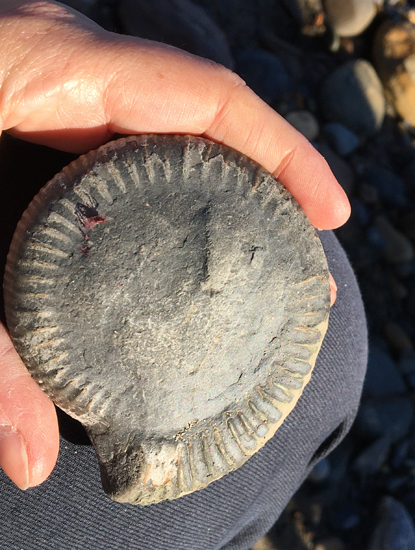When is a Mass Extinction a Mass Extinction?
Defining When a Mass Extinction Occurs
Mass extinctions by definition are substantial and significant events. At any time in the history of life on Earth, there will be a level of background extinctions taking place as well as speciation – the evolution of new species. The vast majority of species recorded in the fossil record have gone extinct as part of this normal background rate, this is a consequence of evolution and the process of adaptation. However, it is the mass extinctions that grab the headlines, although the existence of such events in the geological record of this planet was not really understood and widely accepted until late on in the 19th century.
As scientists and geologists began to understand the stratigraphy (the sequences of rocks laid down in strata, indicating they were of different ages), and an appreciation of the development of life began to emerge, it was noted that many groups of fossils disappeared from the fossil record at about the same time.
Fossils such as ammonites, very abundant in strata dated from the Jurassic and Cretaceous, become more scarce and less diverse in rocks derived from Upper Cretaceous sediments, before finally disappearing from the fossil record completely. Ammonite fossils are not found in rocks younger than approximately 65 million years. Although present in older rocks, they are not known from younger rocks.

Picture credit: Everything Dinosaur
It is partly due to the dramatic change in the fossil record that the boundaries between geological eras and periods are where they are in the chronological history of our planet. For instance, the boundary between the Mesozoic and the Cenozoic eras is at approximately 65 million years ago – the time of a mass extinction that saw the end of the Dinosaurs, mosasaurs, pterosaurs and plesiosaurs. The boundary between the Palaeozoic and the Mesozoic (Permian/Triassic periods), dated to approximately 248 million years ago marks what is believed to have been the greatest mass extinction of all time.
Geologically rapid, major reductions in the diversity of life on a global scale are termed mass extinctions. Patterns of extinction and the severity of the extinction event are assessed by examining their impact on the taxonomic hierarchy. Individual species may become extinct, indeed whole genera (the next taxonomic category up from species) may die out, but the term mass extinction is usually reserved for those events that impact on life at the family level – the next category up from genus/genera). Geologists and palaeontologists have identified five especially severe mass extinction events in the history of life on planet Earth. These are termed the “Big Five” and they are summarised in the table below.
The Big Five Mass Extinction Events (Phanerozoic Eon)
| Mass Extinctions – the Big Five (Phanerozoic Eon) | |||
| Era | Period | Date (approx) | Main Extinctions |
| Palaeozoic | Late Ordovician | 443 million years | Trilobites, Brachipods, Corals, Echinoderms |
| Palaeozoic | Late Devonian | 355 million years | Reef dwellers – Corals, Bivalves, Sponges |
| Palaeozoic/Mesozoic | Late Permian | 248 million years | Corals, Reef dwellers, Trilobites, Graptolites, Brachipods, Amphibia, Reptilia* |
| Mesozoic | Late Triassic | 206 million years | Gastropods, Cephalopods, Sponges, Reptila, Amphibia, Mammal-like Reptiles, Insects |
| Mesozoic/Cenozoic | Late Cretaceous | 65 million years | Cephalopods, Dinosauria, Pterosaurs, Plesiosaurs, Plankton, Echinoderms |
Source: Everything Dinosaur
Note
The Phanerozoic Eon refers to the geological time from approximately 545 million years ago to the present, this eon marks the presence of visible life in the fossil record (animals with hard parts such as shells).
The Permian mass extinction is believed to have been the greatest mass extinction of all with nearly 60% of all marine families becoming extinct. Life on land was devastated too with many groups of amphibians, reptiles and the ancestors of mammals also perishing. Such was the devastation that the term “dead clades walking” has been coined by scientists to describe those remnants of once diverse and abundant families of organism left behind.
It is possible for a fossil of an organism to be found in rocks which were formed after these organisms are believed to have become extinct. This is not always due to some “living fossil” existing in a remote, isolated area after the rest of their species have died out, but perhaps due to a process called redistribution. For example, a fossil of a sea urchin, preserved as an internal flint mould, laid down originally in Cretaceous chalk strata. As the chalk is weathered and eroded the more robust flint nodule survives this physical process and eventually under the effects of wind and rain is deposited in a river where it mixes with sand and gravels before finally coming to rest at a bend where the river water slows down, losses energy and deposits its load of debris. Thus the flint nodule, no doubt having suffered some weathering may find itself redistributed into younger sediments.
Everything Dinosaur stocks a range of replicas of iconic animals from the fossil record: Replicas of Iconic Fossil Animals.

